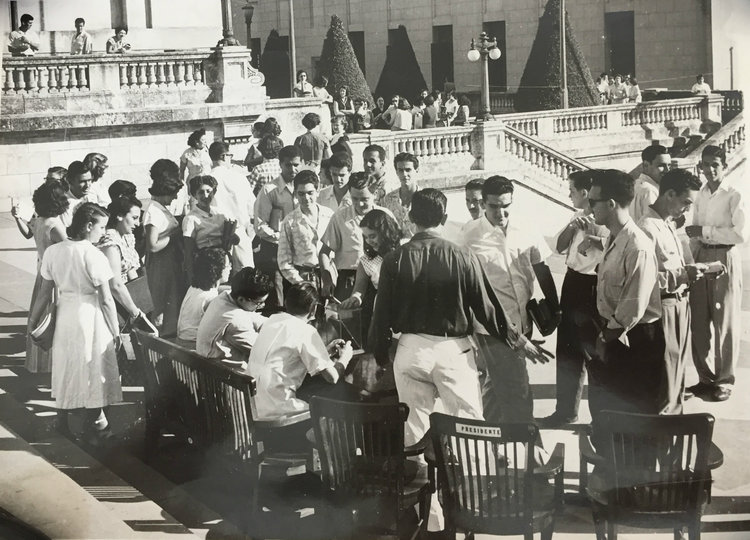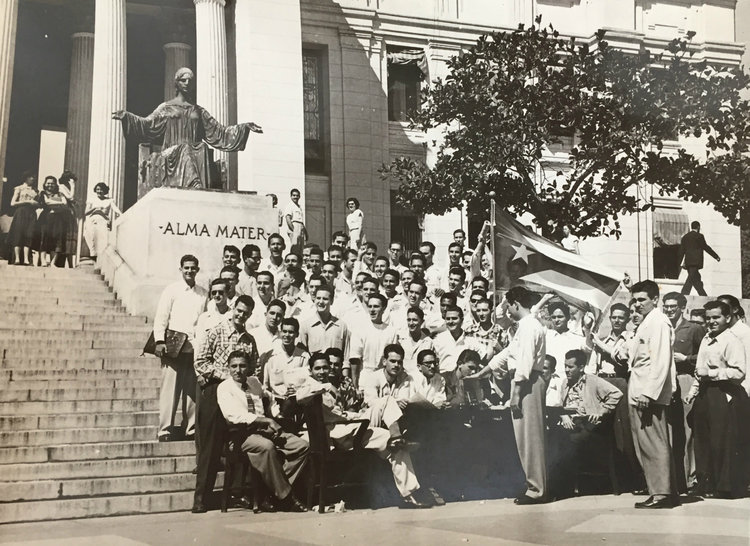Constantino Arias
“The universities are available only to those who share my revolutionary beliefs.”




Constantino Arios
Constantino Arias was the house photographer at the Hotel Nacional. He captured photos depicting such vices as gambling and prostitution, but these pictures were never published because of censorship during the rule of then-President Fulgencio Batista.
Constantino Arias (1920‐1991) was a free‐lance photographer whose photos provide a rare and what is probably the most complete black and white picture of Havana society in the 1940s and 50s.
Arias struggled to make a living in pre‐revolutionary Cuba where his only regular job was as house photographer for Havana’s Hotel Nacional from 1941 to 1959. The hotel was a hangout of mostly U.S. tourists and inside the hotel Arias photographed the casinos and shows, the tourists at play; on his own time, he photographed ordinary Cubans at places like the Rumba Palace Bar, the terrible poverty (some of it just outside the doors of the hotel) and the growing political unrest. Arias, a slight quiet man, moved quickly through the streets, photographing anything and everything, mostly in hopes of selling his photographs to the glossy magazines, so he could give away the political photographs to magazines unable to pay. However, most of his photographic images of the gambling, prostitution and politics were never published because of censorship.
With the Revolution, Arias’ life changed. He graduated from the School of Journalism at the University of Havana in 1961 and worked in the photographic laboratory of Bohemia magazine. His early photographs and negatives were stored in boxes in the home he shared with wife Fina and their daughter. The Center for Cuban Studies first heard of Arias from the great cinematographer and photographer Mario Garcia Joya (Mayito) whose photographer wife Marucha (Maria Eugenia Haya) had begun collecting Arias’ photos in the 1970s. As a historian and critic, she found Arias’ photos the most complete picture of Havana society in the 1940s and 50s, quite unlike what was usually published of Havana before the revolution. (His archive consisted of approximately 10,000 negatives). Arias himself was no longer interested in printing, so Mayito began to print from many of Arias’ negatives so that people would see his incredible work. As a result, between 1972 and 1980 he received several prizes given by the Cuban Journalists’ Union for his historical reportage.

